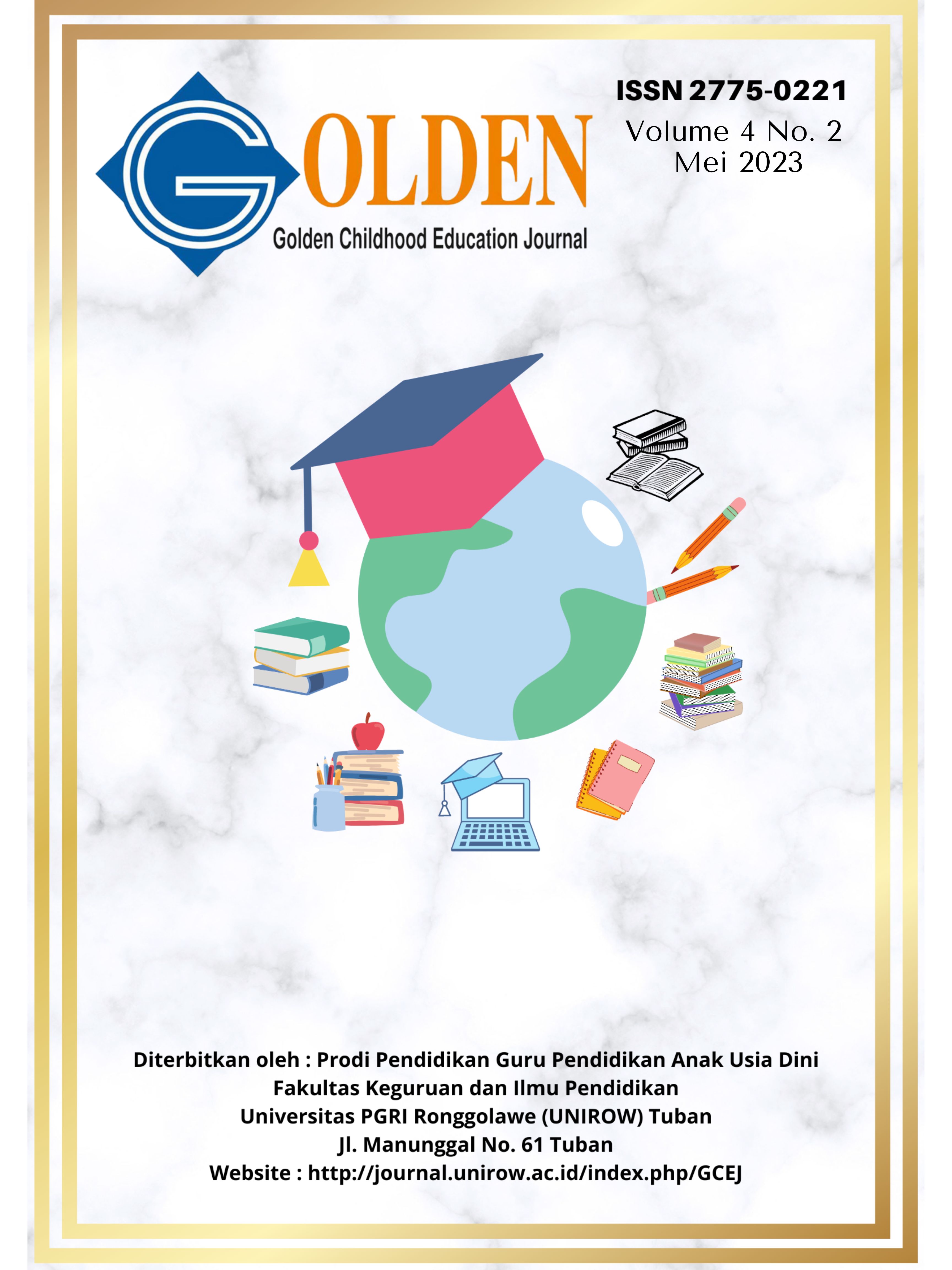MENINGKATKAN KEMAMPUAN KOGNITIF PENGENALAN ANGKA DENGAN MEDIA PUZZLE STICK ICE CREAM PADA ANAK KB USIA 3 – 4 TAHUN DI KB ‘AISYIYAH TAMBAKBOYO DESA PABEYAN KECAMATAN TAMBAKBOYO KABUPATEN TUBAN
DOI:
https://doi.org/10.55719/gcej.v4i2.923Keywords:
Cognitive Ability, Media Puzzle, Stick ice creamAbstract
This research is based on a condition where based on the results of observations in the learning process recognizing numbers 1-10 in KB 'Aisyiyah Tambakboyo, Pabeyan Village, Tambakboyo District, Tuban Regency Academic Year 2019/2020 is still low, so efforts are needed to improve cognitive abilities by media puzzle stick ice cream. The formulation of the problem in this research is whether using puzzle stick ice cream media can improve the cognitive abilities of family planning children aged 3-4 years in the introduction of numbers 1-10 in KB Aisyiyah Tambakboyo, Tambakboyo District, Tuban Regency, 2019/2020 Academic Year and How to increase the cognitive abilities of family planning students 3 - 4 years old at KB Aisyiyah Tambakboyo in recognizing numbers 1-10 using puzzle stick ice cream learning media. The purpose of this research is to find out the benefits of stick ice cream puzzle media to improve cognitive abilities of children in family planning aged 3-4 years in the introduction of numbers 1-10 in KB Aisyiyah Tambakboyo, Tambakboyo District, Tuban Regency, 2019/2020 Academic Year. And to find out the increase in cognitive abilities of family planning children aged 3 - 4 years in KB Aisyiyah Tambakboyo in recognizing numbers 1-10 after using the stick ice cream puzzle learning media. This type of research uses a class I action research with 3 stages, namely pre-cycle, cycle I, and cycle II. Each cycle consists of 4 stages, namely planning, implementing, observing, and reflecting. The subjects in this study were 20 children in 'Aisyiyah Tambakboyo Family Planning, Pabeyan Village, Tambakboyo District, Tuban Regency. The datal collection techniques used in line studies were observation and documentation. This data was analyzed using qualitative descriptive analysis techniques with individual completeness criteria above 65% and class completeness above 85% / increased. This can be seen from the completeness of the class in pre-cycle there is a value of 20%, 45% in cycle I, and 85% in cycle II.
Downloads
References
R. Rasyid, M. Marjuni, A. Achruh,
M. R. Rasyid, and W. Wahyuddin,
“Implikasi Lingkungan Pendidikan
Terhadap Perkembangan Anak
Perspektif Pendidikan Islam,”
AULADUNA J. Pendidik. Dasar
Islam, vol. 7, no. 2, pp. 111–123,
Y. T. Ratnasari, “Profesionalisme
Guru Dalam Peningkatan Mutu
Pendidikan,” Revital. Manaj.
Pendidik. Anak Usia Dini di Era
Revolusi Ind. 4.0, 2019.
Harun Rasyid dkk, Assesmen
Perkembangan Anak Usia Dini.
Yogyakarta: Multi Preesindo, 2009.
A. Susanto, Perkembangan Anak
Usia Dini Edisi1. Jakarta.l
Kencanal Prenada Medial Group.l,
S. P. Sari, U. Manzilatusifa, and S.
Handoko, “Penerapan Model
Project Based Learning (PjBL)
untuk meningkatkan kemampuan
berfikir kreatif peserta didik,” J.
Pendidik. Dan Pembelajaran Ekon.
Akunt., pp. 119–131, 2019.
W. Marienda, M. Zainuddin, and E.
N. Hidayat, “Kompetensi dan
Profesionalisme guru pendidikan
anak usia dini,” Pros. Penelit. Dan
Pengabdi. Kpd. Masy., vol. 2, no. 2,
R. Wahyuni, E. Uliyanti, and S.
Buwono, “Peningkatan Aktivitas
Belajar Menggunakan Model
Kooperatif Tipe Stad Pembelajaran
IPA Kelas IV Sdn 19,” J. Pendidik.
dan Pembelajaran Khatulistiwa,
vol. 2, no. 1.
H. M. Sukardi, Metode penelitian
pendidikan tindakan kelas:
implementasi dan
pengembangannya. Bumi Aksara,
M. Ramdhan, Metode penelitian.
Cipta Media Nusantara, 2021.
Depdiknas, Pedoman
Pembelajaran di Taman Kanak –
kanak. Jakarta :Dikti, 2007






